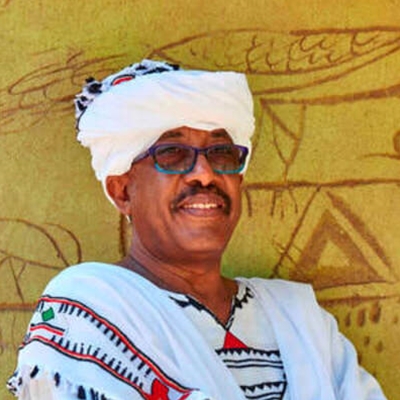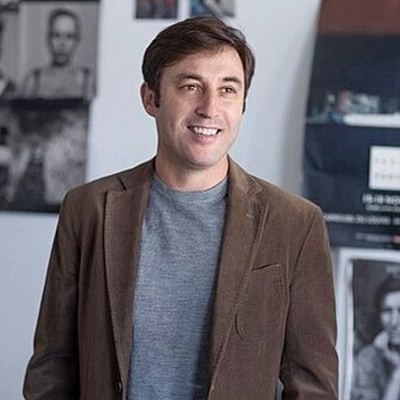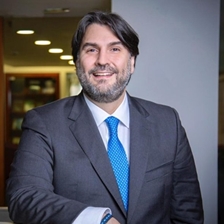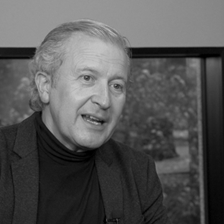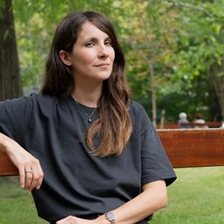Event 17
Rashid Diab in conversation with Sema D’Acosta
Painting a a Revulsive Force
Venue: Fundación Valentín de Madariaga
Sudanese painter Rashid Diab reflects in his work the twists and turns of his tumultuous life, landscapes and people from his homeland, colors and sensations that bring us closer to his world. He also captures the disastrous effects of the wars and conflicts that ravage his country and have forced him to leave it and settle, for the second time, in Spain. The first time was for his studies; the second, out of necessity. He uses his painting as a catalyst against violence.
Rashid Diab was born in Wad-Medani, on the banks of the Blue Nile in Sudan, an environment that inspired his early works using rudimentary and improvised materials. He studied at the School of Fine Arts and Applied Arts in Khartoum, where he graduated in 1978 and received a scholarship to travel to Spain, where he earned a degree in painting and printmaking from the Complutense University of Madrid. In 1991, he obtained his PhD on traditional and contemporary art from Sudan, still the only one of its kind. Over the next 9 years, he taught at the same university. In the mid-1970s, his works began to be collected by national museums, libraries, and private collectors, and more recently, by the Nairobi Contemporary Art Institute and the Ramzi and Saeda Dalloul Art Foundation (DAF). In 1999, he moved back to Khartoum and in 2005 he opened the Rashid Diab Art Center, a non-profit organization dedicated to eradicating cultural illiteracy, offering courses for children, artist residencies, and exhibitions of Sudanese artists. The war that broke out in 2023 in Khartoum forced Diab to flee his home and return to Spain.
Diab will discuss his life and work with Sema D'Acosta, art critic, researcher and professor of Communication, Realization and Production. He is a member of the Consejo de Críticos de Artes Visuales de España, the IAC and the Asociación de Periodistas Culturales de Andalucía José María Bernáldez. He is also a regular contributor to El Cultural, the international magazine Arte-contexto and Diario de Sevilla. He is the author of several books on art such as The tip of the iceberg and Reflections on current art.
Event in Spanish. Welcome at 20.05
Supported by the Open Society Foundations
Customers who bought this, also bought
- Ángel Cárdenas and Ricard Frigola in conversation with Miquel Molina [13] Friday 14 February 2025, 7pm – 7.50pm
- Simon Armitage in conversation with Alejandro Luque [22] Saturday 15 February 2025, 1.15pm – 2.05pm
- Guided tour of the exhibition of Coro López-Izquierdo [3] Thursday 13 February 2025, 6pm
- Simon Armitage and his band Lyr in concert [7] Thursday 13 February 2025, 8.15pm – 9.05pm
